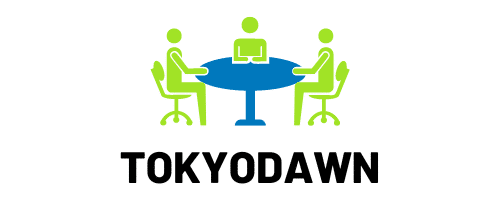Welcoming a dog into your home is like adding a new member to your family. These loyal, loving animals not only bring joy and laughter into your lives but also require a commitment to their health and wellbeing. One of the common health issues dogs face, especially in their middle to senior years, is being overweight. A sedentary lifestyle, overeating, or a lack of proper exercise can lead to weight gain, posing health risks such as diabetes, heart disease, and arthritis. This article aims to guide you on the ideal exercise routine for your overweight pet, with the hope of improving their health and increasing their longevity.
Understanding Your Dog’s Weight Problem
Before we delve into establishing an exercise routine, it’s paramount to understand what exactly an overweight dog looks like and what causes obesity in dogs. Overweight is a term used when a dog is 10-20% above its ideal body weight. When a dog is over 20% of its ideal weight, it’s classified as obese.
Avez-vous vu cela : What’s the Best Way to Handle a Pet’s Fear of Thunder and Fireworks?
Like humans, dogs gain weight when they consume more calories than they burn. This could be due to high-caloric food, excessive treats, or lack of physical activity. Certain breeds are also more prone to putting on weight, including Beagles, Labrador Retrievers, and Dachshunds. Aging, as well as neutering or spaying, can also contribute to weight gain in dogs.
However, it’s not always easy to determine if your dog is overweight just by looking. This is where your vet comes in handy. Regular vet check-ups will help to monitor your dog’s weight and identify any potential health risks.
En parallèle : What’s the Best Way to Handle a Pet’s Fear of Thunder and Fireworks?
Developing a Weight Loss Plan for Your Dog
Creating a weight loss plan for your pet isn’t a walk in the park. It requires careful planning and commitment to implement. The plan should take into consideration your dog’s breed, age, health status, and current weight. Consulting a veterinarian or a certified pet nutritionist can provide valuable insights into your dog’s dietary needs and help you create a balanced, calorie-controlled diet plan.
Always remember that sudden weight loss can be harmful to your pet. The goal is to achieve slow, steady weight loss. This often involves reducing calorie intake and increasing physical activity. Remember to monitor your pet’s progress regularly and adjust the plan as needed.
Choosing the Best Exercise for Your Overweight Dog
Now that you understand the importance of a weight loss plan, the next step is to choose the best exercises that will help your dog shed those extra pounds. The type of exercise will depend on your dog’s breed, age, and current fitness level. A vet or a professional dog trainer can guide you in making the best decision.
Walking is an excellent exercise for all dogs. Start with short, slow walks and gradually increase the distance and pace as your dog’s fitness improves. Swimming is another great low-impact exercise that can help dogs with arthritis or joint issues.
Additionally, playing games such as fetch or frisbee can make the exercise more enjoyable for your dog. Remember to exercise your dog during the cooler parts of the day to prevent overheating.
The Importance of Consistency in Exercise
Consistency is key to helping your dog lose weight and maintain a healthy weight. Regular exercise not only burns calories but also keeps your dog’s body healthy and its mind sharp. Aim for at least 30 minutes of exercise each day. If your schedule doesn’t allow for a long exercise session, consider breaking it up into shorter sessions throughout the day.
Consistency also applies to your dog’s diet. Stick to the diet plan, avoid giving extra treats, and feed your dog at regular times. Record your dog’s weight at least once a week to monitor progress.
Keeping Your Dog Motivated to Exercise
Just like us, dogs can get bored with the same exercise routine. To keep your dog motivated, try to introduce new exercises or change the environment from time to time. For instance, you could alternate between walking, swimming, and playing games. Also, consider changing the walking route or introducing new toys.
Positive reinforcement such as praise and healthy treats can also encourage your dog to exercise. However, remember to account for these treats in your dog’s daily calorie intake. After all, the goal is to create a calorie deficit to aid in weight loss.
In conclusion, helping your overweight dog lose weight requires a combination of a balanced diet, regular exercise, and consistency. By following these guidelines, you can help your dog shed the extra pounds and enjoy a healthier, more active life.
The Role of Diet in Your Dog’s Weight Loss Plan
When it comes to combating the excess weight, just exercise alone will not suffice. Alongside a consistent exercise routine, it’s crucial to manage your dog’s diet effectively. Dog food plays a major role in weight gain, and consequently, in weight loss. Dogs, like humans, need to consume fewer calories than they burn to lose weight. Therefore, you need to create a healthy and balanced diet that is low in calories but still provides all the necessary nutrients.
Start by evaluating the food you are currently giving your dog. Many commercial dog foods are high in calories and low in nutritional value. Switching to a diet of high-quality, low-calorie dog food can be a game-changer in your dog’s weight loss plan. Moreover, be cautious about the quantity of food your dog consumes daily. Overfeeding is a common cause of weight gain in dogs. It’s essential to serve them controlled portions as per their age, breed, and body condition.
Next, review the treats you give your dog. While it’s okay to reward good behavior, treats should only constitute 10% of your dog’s diet. Opt for low-calorie, nutritious treats. Remember, each added treat means added calories, so make sure to include them in your dog’s daily calorie intake calculation.
Lastly, consider your dog’s water intake. Staying hydrated is as essential for dogs as it is for humans. Ensure your dog has access to plenty of fresh water, especially after exercise sessions.
How to Maintain Your Dog’s Ideal Weight After Weight Loss
Reaching the ideal weight is an achievement, but maintaining it is the real challenge. Many dogs tend to regain the lost weight if their owners slack off on the exercise routine or diet plan. Therefore, it’s important to continue the good habits even after your dog has shed the excess weight.
Firstly, keep up with the exercise routine. Regular physical activity is beneficial not just for weight maintenance but also for overall health and happiness of your dog. It keeps the heart healthy, joints flexible, and mind sharp. You don’t have to stick to strenuous exercise, but ensure your dog gets at least 30 minutes of physical activity daily.
Secondly, continue to monitor your dog’s weight and body condition. Regular check-ups with the vet can help identify any slight weight gain early on before it becomes a problem. Adjust the diet and exercise plan as necessary depending on your dog’s weight.
Finally, stick to the diet plan. It can be tempting to go back to old feeding habits once your dog has lost weight. But remember, those habits might have contributed to the weight gain in the first place. Continue feeding your dog a balanced, low-calorie diet and control the portion sizes.
Conclusion
Helping an overweight dog lose weight and maintain the ideal weight is not a one-time effort. It’s a continuous process that requires commitment, patience, and consistency. By implementing a regular exercise routine, a balanced diet, and regular weight monitoring, you can ensure your dog enjoys a healthy, active life. Remember, your dog’s health and well-being depend on the choices you make. With the right approach, you can turn your overweight dog into a fit and happy canine companion.











